 |
 |
 |
| |
ATN 083: Longitudinal Changes in Cardiovascular Risk Markers among HIV Infected and at Risk Adolescents: "Endothelial dysfunction as measured by sVCAM-1 is higher in HIV+ adolescents than HIV- individuals"
|
| |
| |
Reported by Jules Levin
CROI 2011 March 2 Boston
Salma S. Syed1, Rula S. Balluz1, Edmond K. Kabagambe2, Craig M. Wilson2, John Sleasman3, Bill G. Kapogiannis4, Sharon Nachman1
1SUNY at Stony Brook, NY, 2Univ. of Alabama at Birmingham, AL, 3Univ. of S. Florida, St. Petersburg, FL, 4NICHD, Bethesda, MD
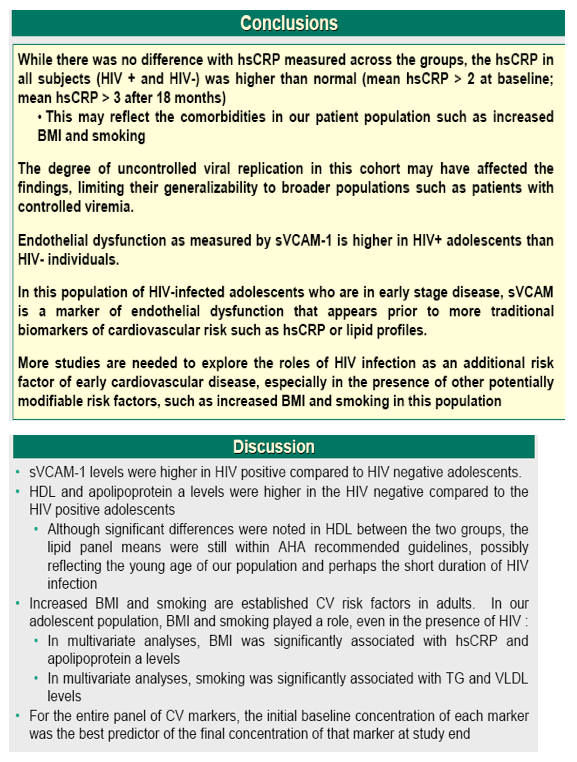
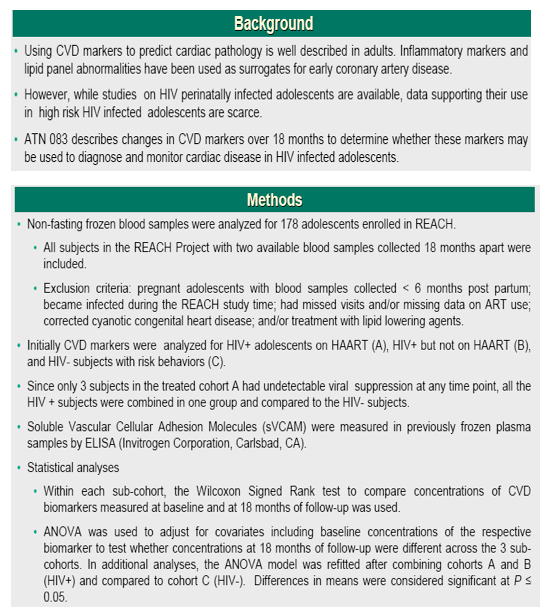
ABSTRACT
Background: Using biochemical markers to predict cardiac pathology is part of mainstream adult cardiology; however, data supporting such use among HIV+ adolescents are scant. ATN 083 describes changes in cardiovascular disease markers (CVD) over 18 months among HIV+ adolescents on highly active antiretroviral therapy (HAART) (A), HIV+ but not on HAART (B), and HIV- subjects with risk behaviors (C).
Methods: We used frozen non-fasting blood samples drawn 18 months apart from 178 adolescents enrolled in REACH (Reaching for Excellence in Adolescent Care and Health). There were 67 adolescents enrolled in A, 30 in B and 81 in C. Subjects were excluded if they were pregnant, became HIV+ on study, or received lipid lowering drugs. Total cholesterol (CHOL), LDL, HDL, VLDL, triglycerides (TG), apolipo- protein A1, hsCRP and sVCAM-1 were measured at baseline and 18 months later. Wilcoxon signed rank test and ANCOVA were used for analyses.
Results: The mean age was 16.7±1.2 years and did not vary across the three cohorts (P=0.10). Most participants were females (69%). Only 11% of HIV+ subjects had a viral load measurement < 400.
Despite the non-fasting state, lipid parameters were below AHA guidelines for increased CVD risk. Mean CHOL and TG levels were 148-161 and 78-112 mg/dL at entry and 147-163 and 90-110 mg/dL at 18 months, respectively for A and B.
Mean hsCRP levels were > 3 mg/L in all groups with no differences between entry or after 18 months. There were no significant differences in lipids or inflammatory markers between baseline or after 18 months.
sVCAM-1 was significantly elevated among HIV+ subjects compared to HIV- subjects (P<0.005) and remained elevated after 18 months; models were adjusted for baseline variables (age, sex, race, BMI, smoking, alcohol use, and sVCAM-1 at baseline). The mean ±s.e.m sVCAM-1 concentrations at 18 months for A, B and C were 1638±110, 1454±147 and 1201±99 ng/mL, respectively. Additional adjustment for various potential covariates including HIV variables did not alter this association.
Conclusions: The adolescents did not have elevated lipid panels when compared to AHA guidelines. The data suggest that endothelial dysfunction as measured by sVCAM-1 is higher in HIV+ adolescents than HIV- individuals. The effect of HAART is difficult to assess as minimal virologic suppression was noted. More studies, especially on the role of these markers in high CVD risk HIV+ adolescents (e.g., with obesity or a family history of CVD) are needed.
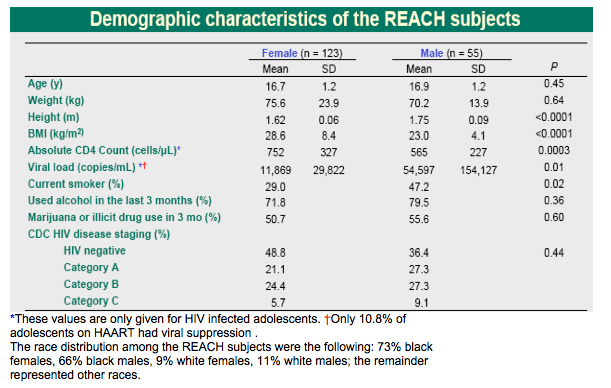
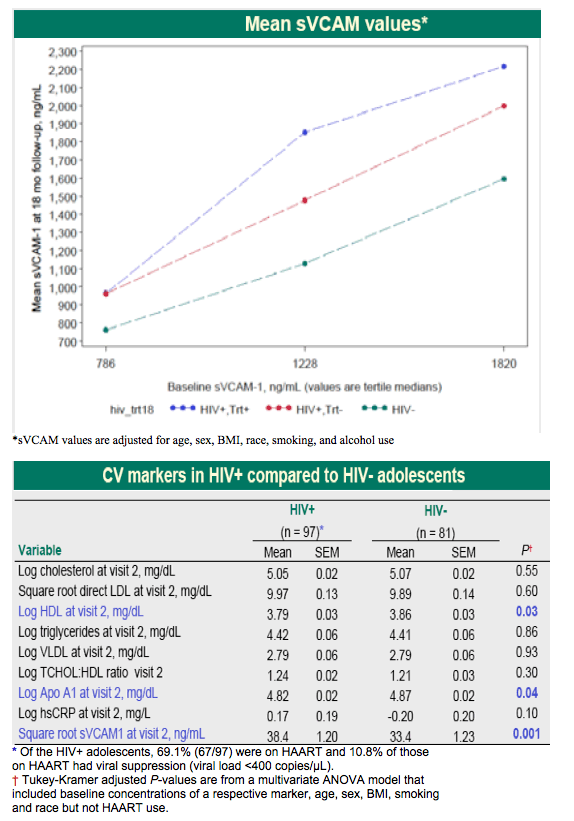
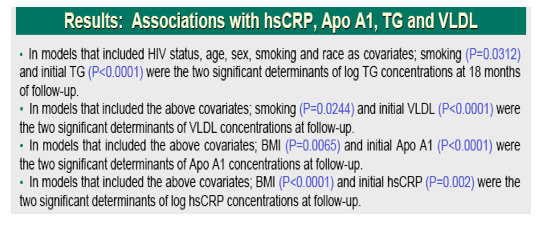
References:
1. Centers for Disease Control and Prevention. Morbidity and Mortality Weekly Report (MMWR). Prevalence of Abnormal Lipid Levels Among Youths --- United States, 1999-2006.
2. Ross AC, Rizk N, et al. Relationship between inflammatory markers, endothelial activation markers, and carotid intima-media thickness in HIV-infected patients receiving antiretroviral therapy. Clin Infect Dis 2009; 49:1119-27.
3. Smoak CG, Burke GL, et al. Relation of obesity to clustering of cardiovascular disease risk factors in children and young adults. The Bogalusa Heart Study. Am J Epidemiol 1987; 125:364-72.
4. Triant VA, Lee H, et al. Increased acute myocardial infarction rates and cardiovascular risk factors among patients with human immunodeficiency virus disease. J Clin Endocrinol Metab 2007; 92:2506-2512.
5. Wilson CM, Houser J, et al. The REACH project: study design, methods, and population profile. J Adolesc Health 2001; 29:8-18.
|
| |
|
 |
 |
|
|